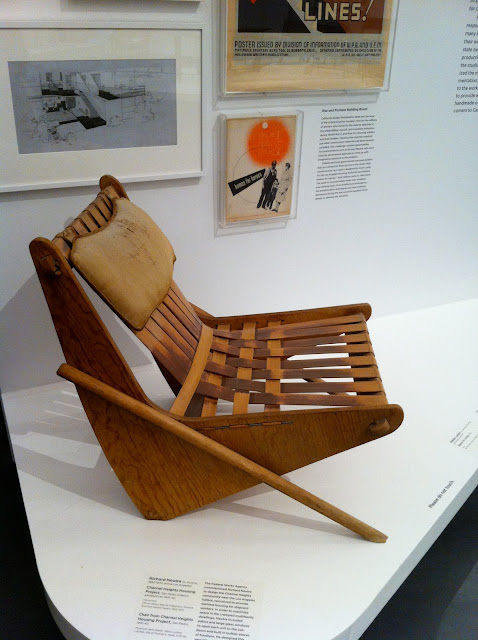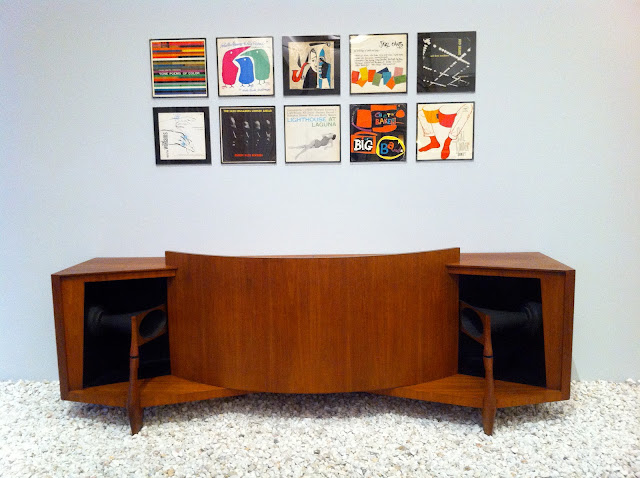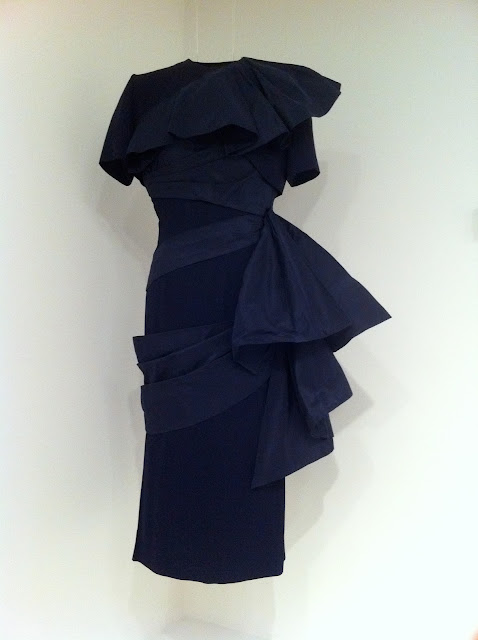 |
| A remake of the October 1951 cover of the LA Times, headline reading "What Makes the California Look" |
Darrick, my mother-in-law and I all trekked our traffic loathing selves to the LA County Museum of Art to scope the long awaited CA Modernism show. Us Californians have pride for our design triumphs (especially the most easily noted mid-century style), but also a very important part of this show was the contextualization of pre and post war eras and of course how these times affected the way things were being made, who was making them and the overall taste. Interesting indeed and I was very very excited to take the beautiful catalogue home. In reading through some of the texts, I cannot help but draw a number of parallels with post-war "makers" to today's craft/DIY/made in USA revival. More on this below...
Richard Neutra. Chair from Channel Heights Housing Project 1941-42. This piece selected from the architects own home.
Quite impressive that these chairs were produced with extremely cheap materials. These days when I think cheap I think it automatically denotes a lack of innovation in the design. Darrick and I dream of being a part of the shift away from this some how, where more people can afford high-quality great looking and functioning items made by the people like us. Arnold Wolff for JBL. Paragon speaker 1957. Just as I turned around to take a shot of the Charles and Ray Eames' delightful living room set up, I was barked at by a navy blue blazer. See it here.
Gilbert Adrian. Two piece dress from The Atomic 50's collection, 1950. Stunning.
Dorothy Wright Liebes. Chinese Ribbon textile, 1940. I am starting to familiarize myself with the important fiber artists of the time because in Fort Bragg there is an enormous opportunity to learn various hand weaving techniques. In fact, I am signing up for a rug-weaving intensive workshop this Spring and there is actually something called the Mendocino Coast Handweavers Guild. Curious.
Our life has taken a drastic turn towards building a practice together, call it craft or whatever you wish, where the goal is to construct life as makers- precisely what many of these designers considered themselves.
The shift in the CA post-war era was a population boom and inspired by the casual indoor/outdoor living of much of the state, among other things. Today the shift comes at a time where people are becoming increasingly interested in using their hands, buying locally (meaning USA vs. outsourcing in this case) and rough economic times are forcing us to think on our feet- act on raw creativity in life's choices. In those days, people were trying to get accepted to universities in order to study with the best ceramicists, fiber and graphic artists. Today, most students are nearly forced into private institutions to learn how to be a skilled free-thinking designers, which means they either don't go due to the price tag or they graduate with heaps of debt. As someone who has gone through the astronomically-expensive-private-art-education-ringer, I wouldn't really say that our country is encouraging young people to be "makers". However, this is not to suggest that people from less fortunate socio-economic were equally having their go at the art education system during these postwar times, but it most certainly can be said that the institutional opportunities have shifted immensely. As a result of that shift, people today are setting up Etsy shops, taking workshops, selling at fairs and building careers out of online resources. It's an interesting time. We are excited to keep dreaming and create our own model of life that reflects our vision of the husband-wife team making our way through life.
A quote from the catalogue:
...a half century after the designer-craftsmen of California were at their apex, their pragmatism continues to exert a strong appeal. Many observers now feel that the studio craft movement has begun an irreversible decline and that the craft community can thrive only by integrating itself fully into the adjacent terrains of design and art practice. From this point of view, the permissiveness of West Coast craft in the 1950's and the assumption that makers could move fluidly among different productive spheres are deeply attractive. Makers then were not forced to label themselves or take sides. They were happy to see themselves as leading double and even triple lives. The same was true of the things they made, which might be objects of aesthetic value, inspirational prototypes for mass production, and symbols of a progressive lifestyle all at once. The story of postwar California may not provide all the answers for today's makers, but it does offer an important lesson: under the right circumstances, craft can be a powerful force for innovation.
Glenn Adamson







No comments:
Post a Comment